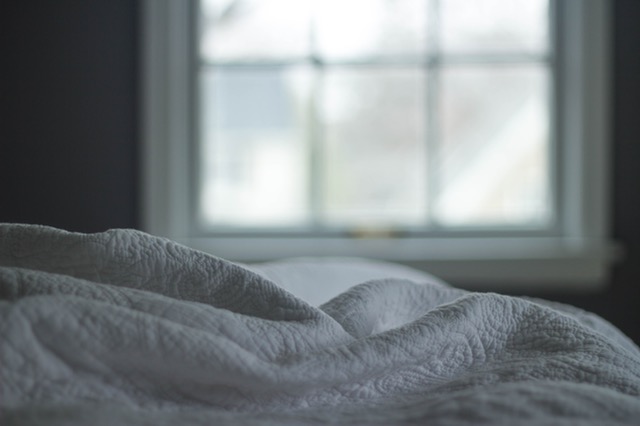Calm. Comfortable. Quiet. This is the type of environment you should cultivate in your bedroom for the best night’s sleep.
Keep it cool. Your body temperature naturally drops as you sleep, so cooling down your room will speed up the process of nodding off. It’s different for everyone, but sleep experts recommend setting your thermostat 5-10 degrees normal than normal so your room should be between 60 and 75 degrees at night.
The less distractions, the better. Free your space from reminders of anything stressful. Screen-free is the way to go, which means no phone, no tablet, no computer, and no TV. The late night texts and emails can wait ‘til morning!
Make it dark. Melatonin is a hormone that naturally promoted sleep and it’s inhibited by light. Help your body ease into the nighttime rhythm by dimming the lights as you get ready for bed. Once it’s time to sleep, make your room as dark as you can without putting yourself at risk for tripping over things. Hide glowing electronics and clocks from vision and consider opting for heavy shades to block out light from street lamps and the early morning sun.
Shhh. Thick rugs and heavy curtains can help muffle sounds from noisy neighbors and outdoor commotion. Background noise like a white noise machine, air purifier, or fan can also help drown out disruptive exterior sounds.
Color matters. Blue is believed to be the magic bedroom color. Studies show that people whose bedrooms are painted blue sleep longer than those who sleep in rooms with different colors. If blue isn’t your style, maybe opt for another relaxing wall color like gray, silver or other cool neutral colors.
Source: health.com
If you or someone you love suffers with insomnia, fill out the form below or call us at 1-877-734-2588 to learn more and register for a prescreen.
[gravityform id=”3″ title=”true” description=”true”]


